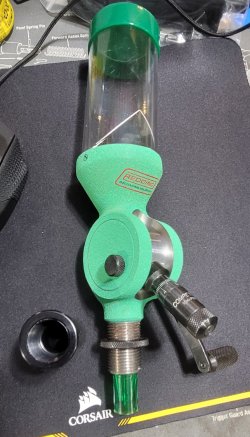ok, so i am trying to dial in the adjustments on the Dillon.
i tried to put together at least 4 cartridges
here is what i have for OAL
1) 1.163..with a diameter just below the crimp line of 0.379
2) 1.155..with a diameter just below the crimp line of 0.379
3) 1.158..with a diameter just below the crimp line of 0.380
4) 1.152..with a diameter just below the crimp line of 0.379
the bullets are Missouri Bullet co. lead, round nose
the diameter of those are .356
they all go into the Lyman test block, some fall out, some i have to tap to get them out...BUT, they all go in flush with the block, none sticking out.
the factory cartridge i took a measurement from, the bullet is FMJ @ .350 diameter. of course that one falls out of the plunk test block with ease.
measurements at about the middle of the case for the new S&B is .383
the reloaded case are at .385
i tried loading up my Girsan (Beretta 92 clone), and of course i had to use a wooden dowel the remove it.
now mind you, i am using Lee carbide dies, and the adjustments especially for the crimp die, i just really cannot dial that in any better, at least not right now.
the flare die, is giving me a flare, i think not a very big flare, just enough to hold the bullets.
the decapping/resizing die is adjusted, but i am not sure since it is a Dillon, if i got it set too deep?
some pics, not good ones, lousy camera.
from left to right...S&B factory, then reloads 1,2,3,4
in this pic, the S&B ammo in the chamber
and in this pic, one of the reloads
so, what say you?
too much resizing when it gets decapped? that would have been my 1st guess.
i cannot do anything to the press until, "Maybe" sunday, if at all. maybe during the week, if i can.
thanks in advance

![Capture 9mm_thumb[4].jpg Capture 9mm_thumb[4].jpg](https://www.thearmorylife.com/forum/data/attachments/26/26302-2dfa7ea23e74f71827058c80161e8acb.jpg?hash=Lfp-oj509x)
